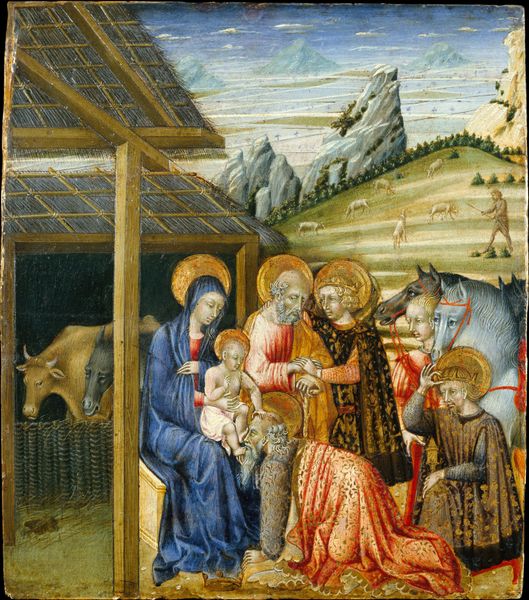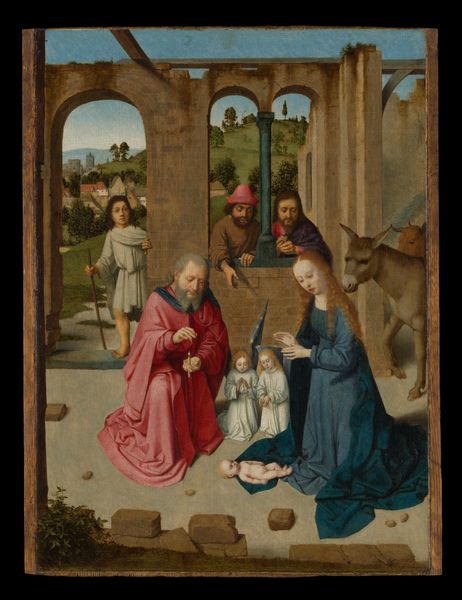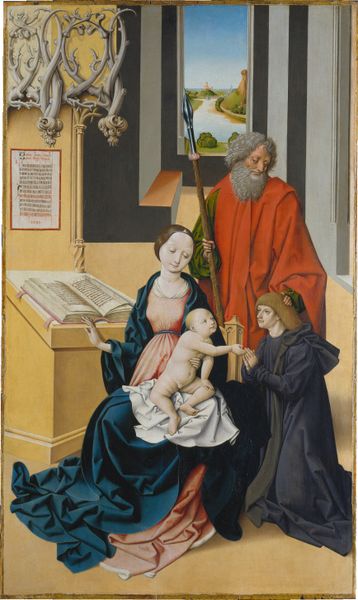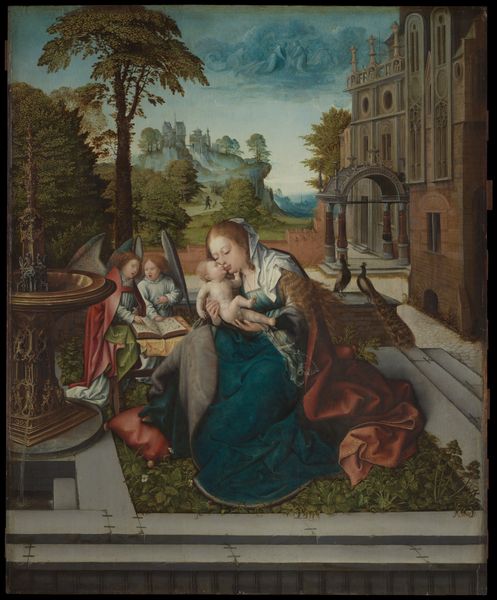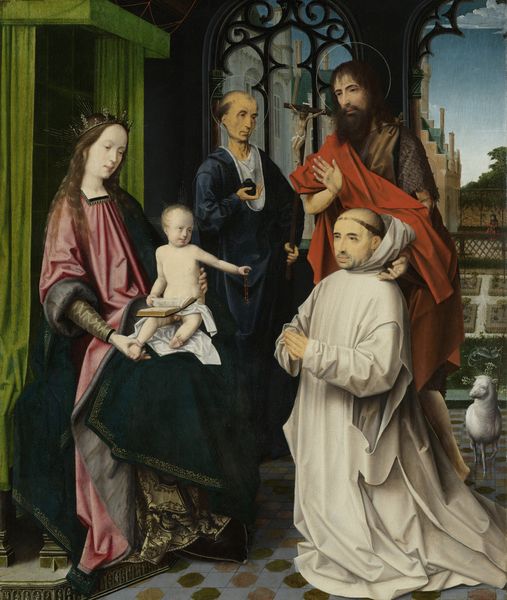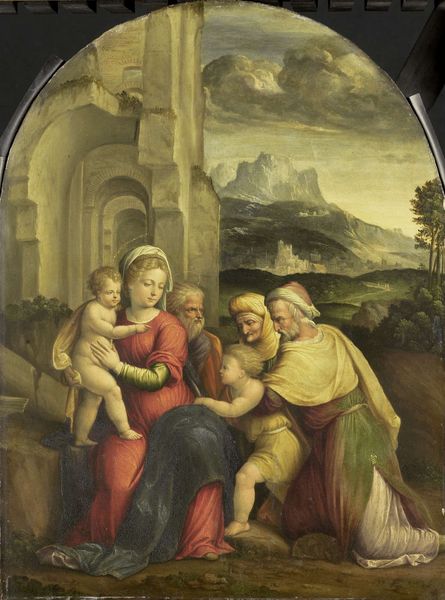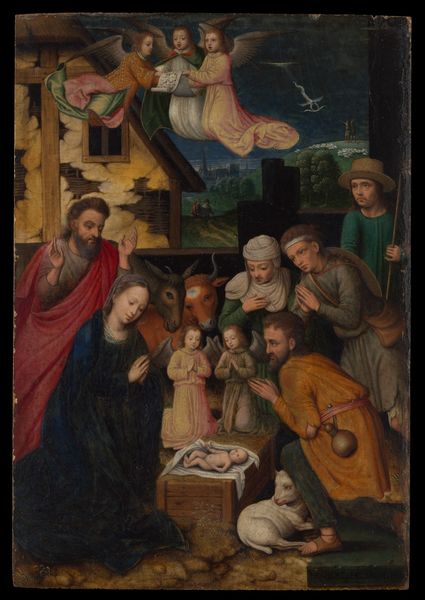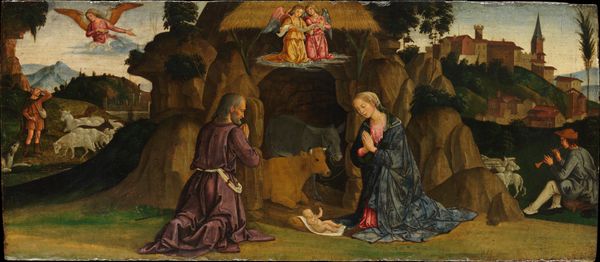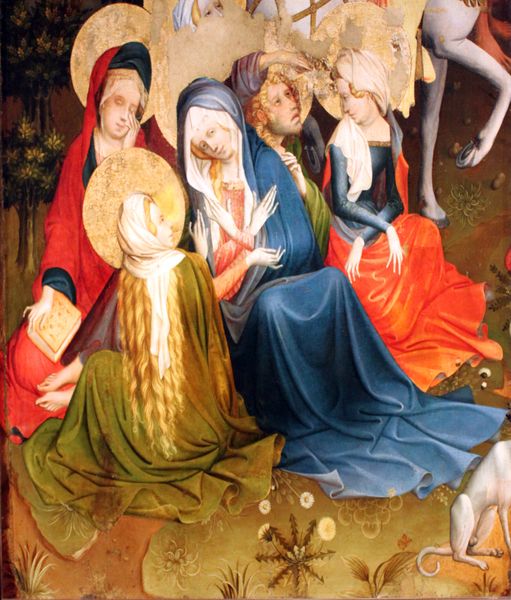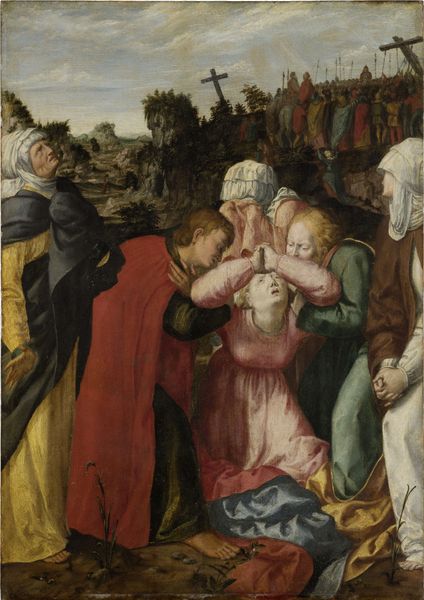
painting, oil-paint
#
medieval
#
allegory
#
painting
#
oil-paint
#
landscape
#
figuration
#
oil painting
#
history-painting
#
northern-renaissance
#
virgin-mary
Dimensions: 37 x 36 1/4 in. (94 x 92.1 cm)
Copyright: Public Domain
Curator: Here we have an oil-on-panel painting titled "The Nativity." It was created sometime between 1455 and 1465 by an anonymous artist. It is currently held at the Metropolitan Museum of Art. Editor: What strikes me first is the mood. The solemnity of Mary and Joseph contrasts with the almost eerie cheerfulness of the angels and onlookers clustered around the infant Jesus. There’s an unsettling, fragmented quality. Curator: I am drawn to the layering of forms. Observe the subtle modeling of Mary's blue robes and the use of gold leaf to flatten the background. It is very typical of Northern Renaissance panel paintings. Notice how the artist plays with scale and perspective, creating a dreamlike space that defies conventional representation. Editor: It's also compelling how the piece incorporates elements of the everyday—note the architecture and details of the garments. But it still mythologizes motherhood and questions its intersections with societal expectations. I see the figures in their historical context. Their roles aren't simply holy, but shaped by political and patriarchal norms of the era. Curator: Precisely. Look at how the stable in the left corner appears almost like an extension of the natural landscape. The painting’s architecture enhances a visual echo that bridges the holy subject to ordinary life, reinforcing the religious symbolism within everyday space. Editor: Absolutely, and the composition emphasizes the communal aspect of this story—but from whose point of view is it told, and to whom? I wonder what messages an ordinary person living then, whether a wealthy patron or peasant farmer, might have taken away. Curator: These paintings acted as instructional objects, offering visual depictions of biblical narratives. "The Nativity," considered through the artistic structures and careful placement of line and form, speaks volumes. Editor: Yes, this deep-seated connection that the painting sparks—between lived experience and sacred narratives. I will continue to reflect on this piece through multiple lenses of gender, religion, class, and history. It asks us to look beyond aesthetic surfaces.
Comments
No comments
Be the first to comment and join the conversation on the ultimate creative platform.
